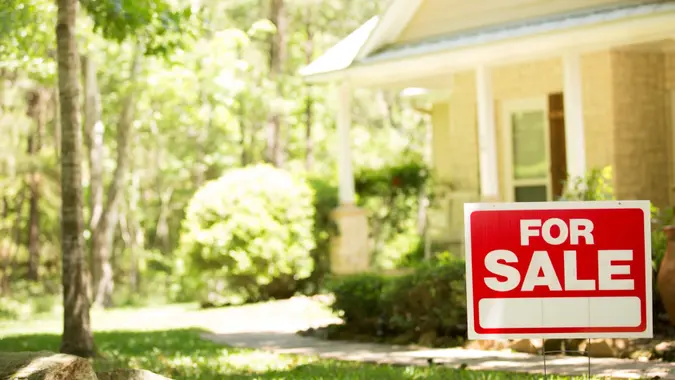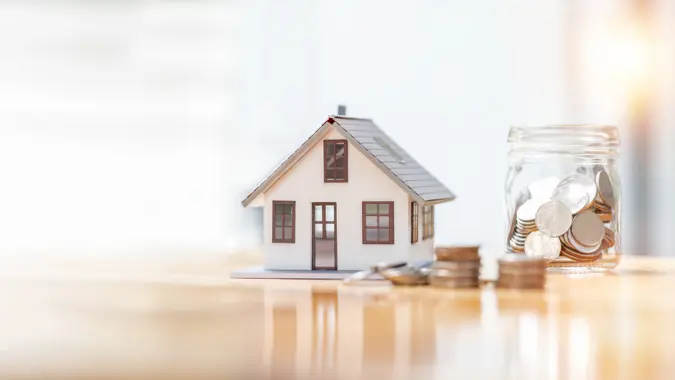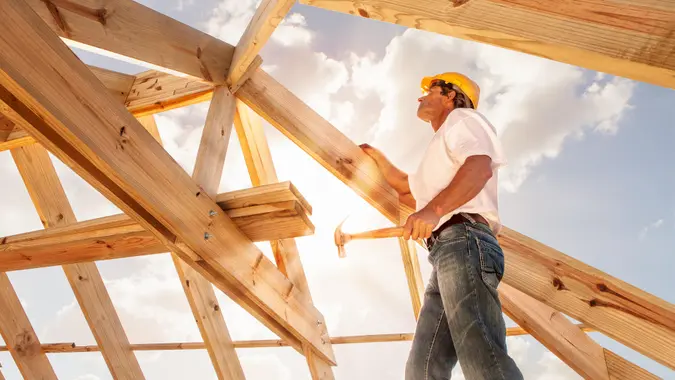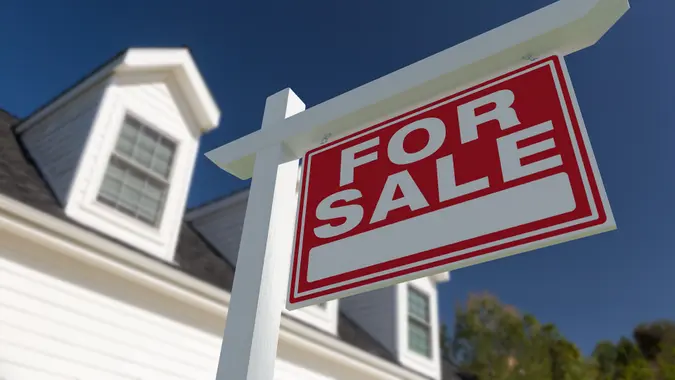How High Will Mortgage Rates Get in 2023?

Commitment to Our Readers
GOBankingRates' editorial team is committed to bringing you unbiased reviews and information. We use data-driven methodologies to evaluate financial products and services - our reviews and ratings are not influenced by advertisers. You can read more about our editorial guidelines and our products and services review methodology.

20 Years
Helping You Live Richer

Reviewed
by Experts

Trusted by
Millions of Readers
Mortgage rates skyrocketed this year, going from just over 3% for a 30-year fixed-rate mortgage at the beginning of the year to over 6.3% for the same loan in mid-December. Mortgage rates have been increasing at their fastest pace since the 1980s, according to Freddie Mac’s Quarterly Forecast report and as reported by Fox Business, and rates could remain high in 2023.
The housing market has been hit hard by inflation this year, rising 7.1% year-over-year in November 2022, according to the Bureau of Labor Statistics. The Federal Reserve raised the benchmark rate by 75 basis points in November to help bring inflation down.
The Fed is expected to continue its rate hikes next year, which in turn can lead to higher interest rates for mortgages.
“Because mortgage rates have moved so fast, buyers may see a minor recalibration in the weeks ahead, but higher rates are likely to stick around until inflation makes much bigger strides back toward the 2% target,” Realtor.com stated as reported by Fox Business.
Freddie Mac’s Primary Mortgage Market Survey showed that mortgage rates have continued their downward trajectory after hitting 7% in November. Freddie Mac noted that while declines have helped stabilize purchase demand, affordability is still a concern.
NBC News reported that estimations from Freddie Mac show that 15 million potential homebuyers have been priced out of the housing market this year due to financial stress from high inflation. Foreclosure filings were up 57% in November compared to the same month last year, although NBC News noted that its still nowhere near the levels during the 2008 housing crash.
 Written by
Written by  Edited by
Edited by 

























